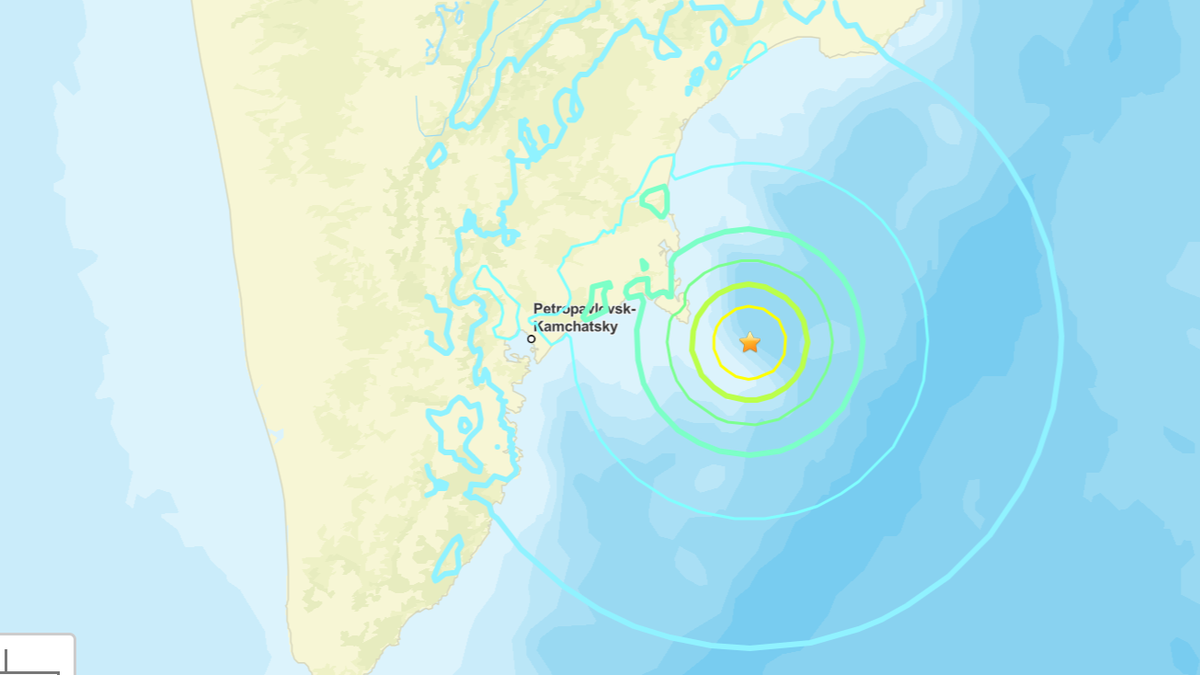Date: July 21, 2025
On July 20, 2025, a series of powerful earthquakes struck off the coast of Russia’s Pacific region, particularly affecting the Kamchatka Peninsula. The seismic activity, which included multiple quakes with magnitudes reaching as high as 7.4, initially raised alarms about a potential tsunami. However, as the situation unfolded, authorities were able to assess the risks and ultimately declared that the tsunami threat had passed.
The Earthquake Sequence
The seismic events began in the early hours of July 20, with the first quake recorded at a magnitude of 6.5. This was quickly followed by a more powerful tremor measuring 7.4, which struck at approximately 10:30 AM local time. The epicenter of these earthquakes was located about 100 kilometers off the coast, in the Bering Sea, an area known for its tectonic activity due to the convergence of the Pacific and North American plates.
- Impact on Local Communities: Fortunately, the remote location of the epicenter meant that there were no immediate reports of significant damage or casualties in nearby coastal communities. However, the tremors were felt across the Kamchatka Peninsula, prompting residents to prepare for possible aftershocks and the potential for a tsunami.
Tsunami Warnings Issued
In response to the earthquakes, the Pacific Tsunami Warning Center (PTWC) issued an initial warning indicating that there was a danger of major tsunami waves. This alert sent local authorities into action, with emergency services on high alert and residents advised to evacuate low-lying coastal areas.
- Public Response: The announcement of a tsunami threat led to a flurry of activity as residents scrambled to higher ground. Many took to social media to share their experiences and seek information, highlighting the role of digital communication in crisis situations.
- Monitoring the Situation: As the hours passed, scientists and seismologists closely monitored the seismic activity. The PTWC and local authorities worked in tandem to assess the situation, utilizing data from buoys and tide gauges to determine whether any tsunami waves were generated.
Downgrade of Tsunami Warning
As the day progressed, the PTWC downgraded its tsunami warning, indicating that the danger had significantly diminished. By late afternoon, officials confirmed that no significant tsunami waves had been detected, and the alert was officially lifted.
- Scientific Analysis: Experts explained that while the initial quakes were powerful, the depth and location of the epicenter played a crucial role in mitigating the tsunami risk. The seismic waves dissipated quickly, and the ocean floor’s characteristics prevented the formation of large waves.
- Community Reassurance: With the threat of a tsunami over, local authorities reassured residents that they could return to their normal activities. Emergency services remained on standby, ready to respond to any aftershocks or related incidents.
Lessons Learned from the Incident
The events of July 20 serve as a reminder of the importance of preparedness in the face of natural disasters. While the immediate threat was resolved without incident, the situation highlighted several key lessons for both authorities and residents.
- Preparedness and Education: The incident underscores the need for ongoing education about earthquake and tsunami preparedness. Communities in seismically active regions must remain vigilant and informed about the risks they face and the appropriate responses.
- Role of Technology: The rapid dissemination of information through social media and emergency alert systems played a vital role in keeping the public informed. This incident demonstrates the importance of leveraging technology to enhance communication during crises.
Conclusion: Resilience in the Face of Nature’s Fury
The powerful earthquakes off the coast of Russia on July 20, 2025, serve as a stark reminder of the unpredictable nature of our planet. While the tsunami threat was ultimately lifted, the events of that day highlight the resilience of communities in the face of natural disasters.
As scientists continue to study seismic activity and improve early warning systems, it is crucial for individuals and communities to remain prepared and informed. The ability to respond effectively to such events can save lives and minimize damage, reinforcing the importance of preparedness in an ever-changing world.
In the aftermath of this incident, the people of Kamchatka can take solace in the fact that they were able to navigate a potentially dangerous situation with courage and resilience, ready to face whatever challenges may come their way in the future.
Sourashis Chanda brings readers their unique perspective on Business, Economy, Health and Fitness. With a background in Health and Physical Fitness of 2years, I am dedicated to exploring [what they aim to achieve with their writing, on the sustainable Economy of the country, various pro tips about business, latest goverment news, with some tips in health are and Fitness.






